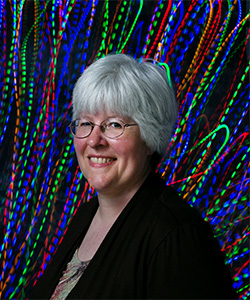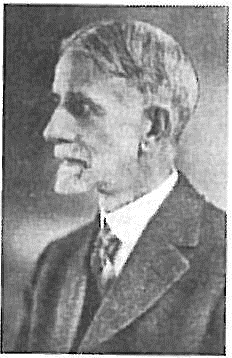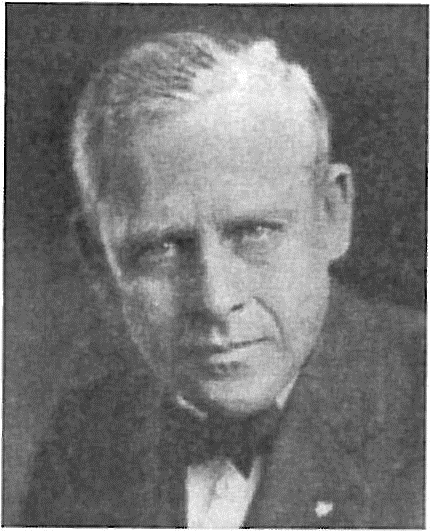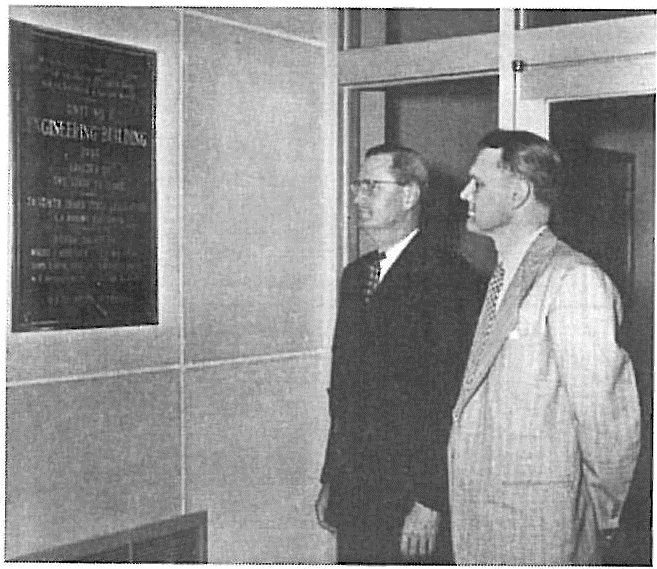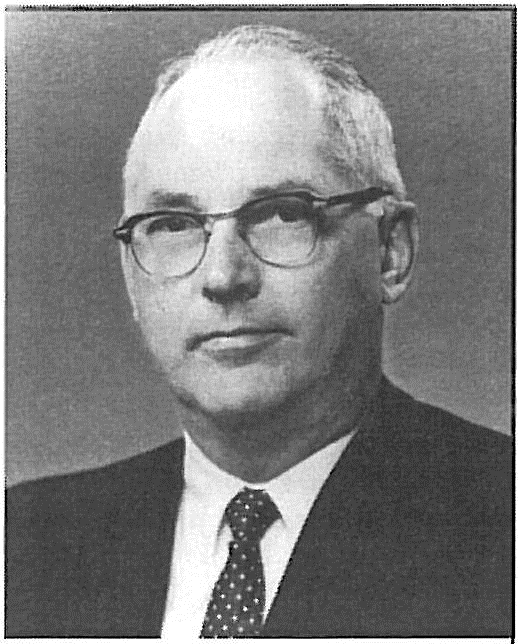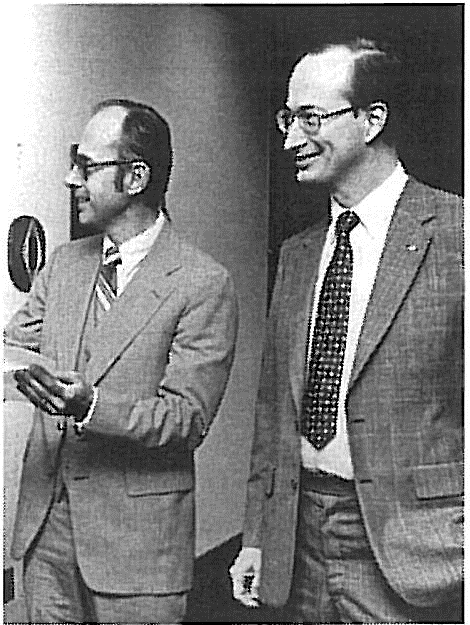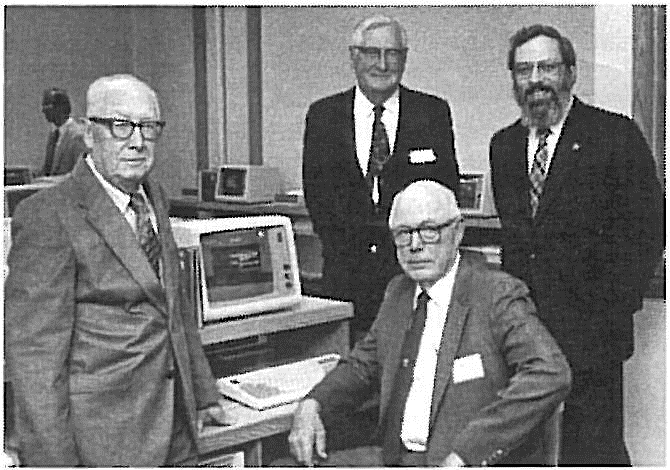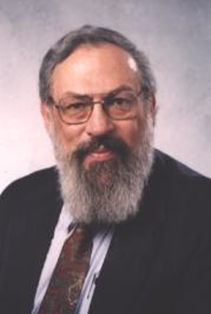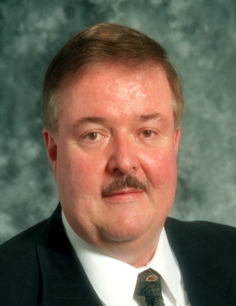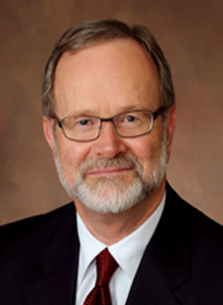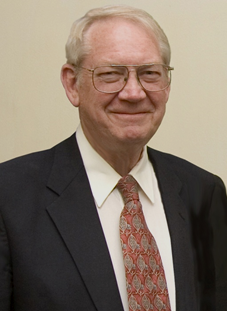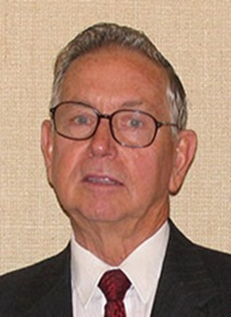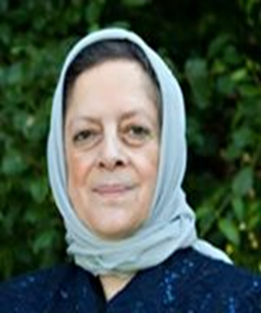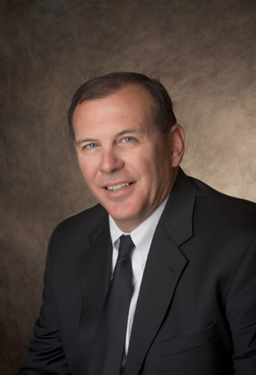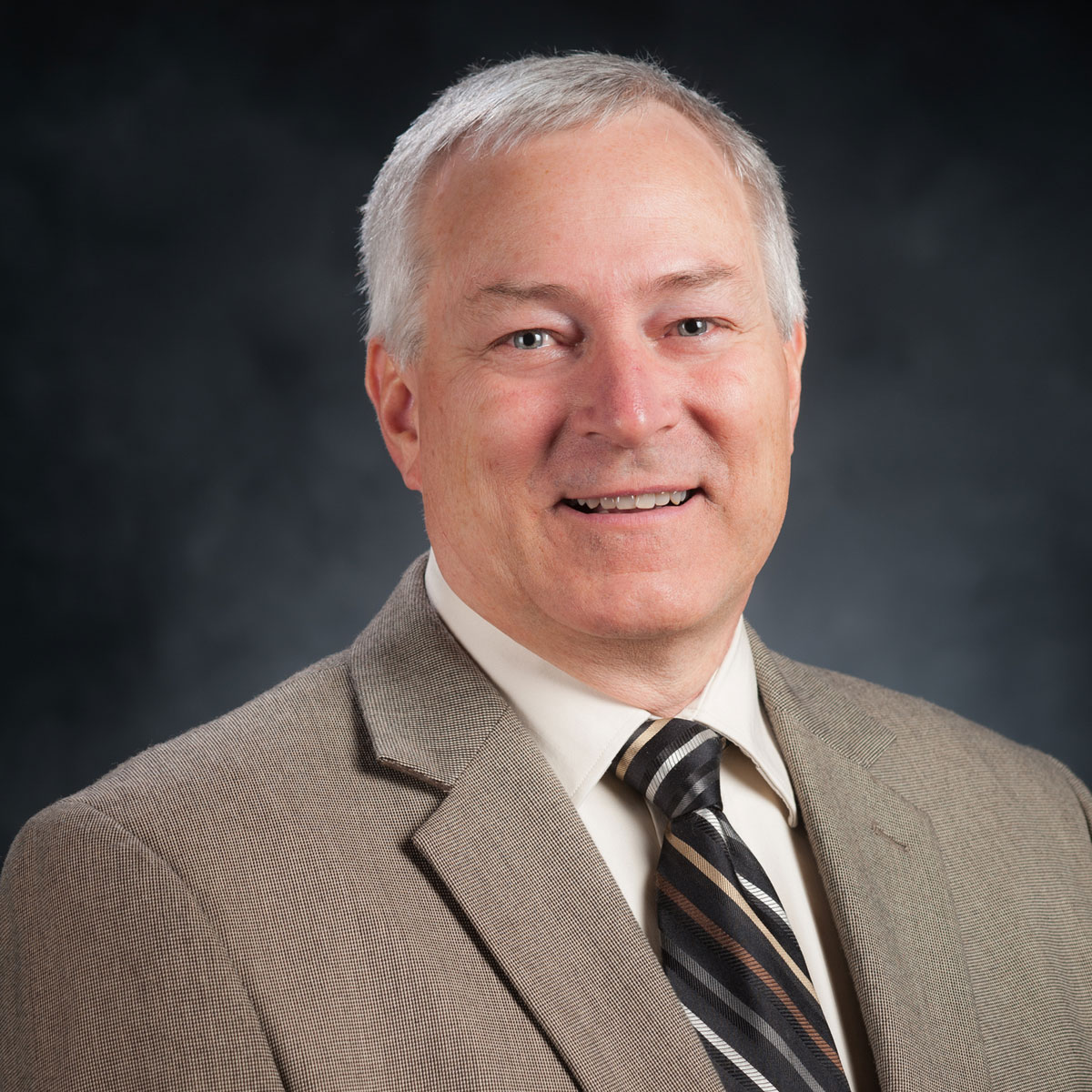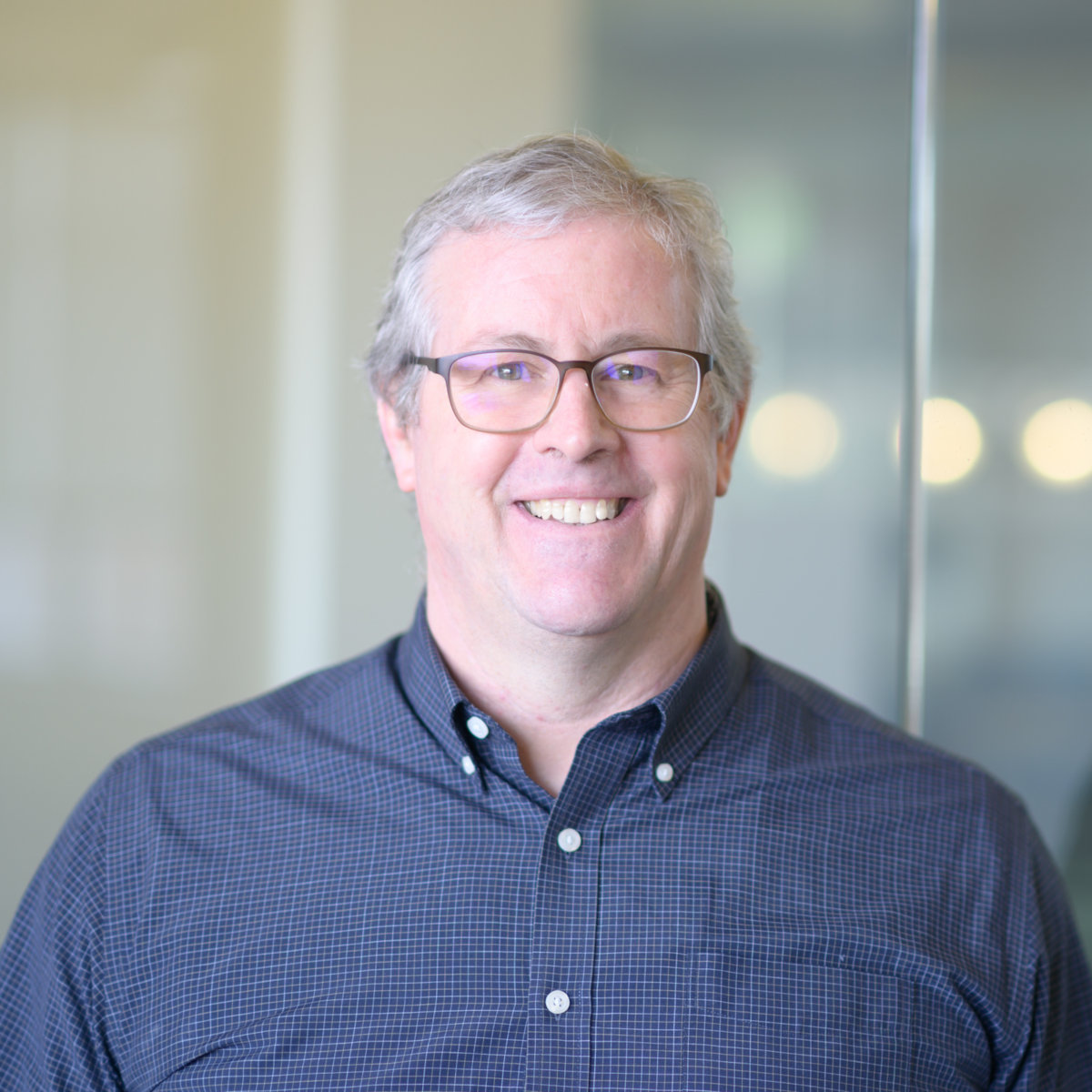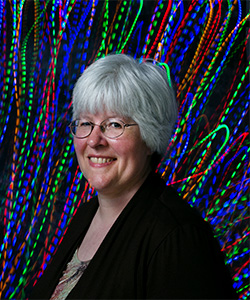College of Engineering Deans
- Charles Newton Little (1911–1923)
- Ivan Charles Crawford (1923–1937)
- Jesse E. Buchanan (1938–1946)
- Allen S. Janssen (1946–1967)
- H. Sidwell Smith (1967–1973)
- Robert R. Furgason (1974–1978)
- Melbourne L. Jackson (1979–1980)
- J. Richard Williams (1980–1983)
- William E. Saul (1984–1989)
- Richard T. Jacobsen (1990–1999)
- David Woodall (Interim Dean Jan 1999–July 1999)
- David E. Thompson (1999–2004)
- Charles L. Peterson (Interim Dean 2004–2006)
- Aichia Elshabini (2006–2008)
- Donald M. Blackketter (2008–2011)
- Larry Stauffer (2012–2021)
- John Crepeau (Interim Dean 2021–2022)
- Suzanna Long (2022–-present)
Charles Newton Little (1911-1923)
Charles Newton Little, was appointed by the Regents as the first dean of the College of Engineering in October 1911. He was born in Nebraska and received his first two degrees from the University of Nebraska. Following this, he received his doctorate from Yale University in 1885 and taught engineering at the University of Nebraska from 1885 to 1890. He then taught mathematics at Stanford University in California, taking a leave in 1899 to teach and do research at the University of Goethingen in Germany. He came to Idaho as an engineering professor in 1901. Rafe Gibbs, in his history of the University of Idaho, reports that Professor Little was one of the first to arrive at the fire that burned the original Administration Building in 1906. He entered the burning building, but came out with only a university catalog.
Dean Little was considered a very able scholar and had written an article in the Transactions of the Royal Society of Edinburgh before coming to the university. He started a study of road materials in the Palouse region, publishing articles on this subject as early as 1910 and 1911.
On several occasions he was asked to help with design of campus improvements such as roads and the first water storage tank. He was also active in the acquisition of the original Engineering Building. At the state level he became a member of the first Highway Commission and often took trips away from the campus to participate in these activities. It must have been through these activities that he arranged for the development of an Engineering Materials Testing Laboratory at the university, which in later years had a direct tie-in with the Idaho Department of Highways.
Little wore a goatee and appears to have been a very visible figure on campus. His tenure as college dean was marked very strongly by an emphasis on his favorite subject, mathematics. He retired in June, 1923 and died that August.
In 1920, Little wrote a history of the College of Engineering. It is included in the Appendix, because it gives a different perspective and additional information about the early days of the college.
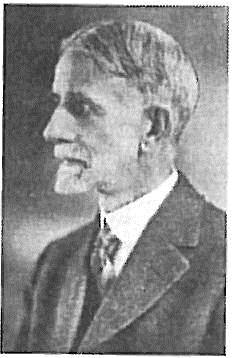
Ivan Charles Crawford (1923-1937)
Ivan C. Crawford was born in Leadville, Colorado, in 1886. He received a BSCE degree from the University of Colorado. Little is known of his early professional activities, other than that he served as a teacher at the University of Colorado from 1912 to 1923, distinguishing himself as a teacher and leader. During World War I, he served as a Lt. Colonel with the U.S. Army Corps of Engineers and was a member of the American Peace Commission assigned to help mitigate war damage in Belgium.
As the youngest dean at that time of any engineering college in the United States, Crawford soon made his mark at Idaho. He gained the respect of the administration and built a reputation for offering a rigorous course of study taught by a competent faculty. Every alumnus I contacted, who had studied under him, had great respect for his fairness and his imposing appearance. In 1933-34, Crawford took a leave-of-absence to serve as Director of Idaho's Public Works Administration (PWA). Hugo Johnson was appointed as acting dean for that year.
During Crawford's administration numerous college comprehensive planning reports were developed. The college admitted its first woman major, Grace Fenton Robertson; she graduated in 1938. The beginning of state water resources planning was also initiated in reports generated during 1933-35. Growth and progress were slowed by the Depression, but the college did get several new buildings and an enhanced reputation that bear the mark of this excellent dean. Dean Crawford was very supportive of professional organizations. He served as National Vice President of the American Society for Engineering Education. He was a member of the Society of Military Engineers and active in the forerunner of the National Society of Professional Engineers.
In his farewell to the College of Engineering in 1937, when he accepted the deanship at the University of Kansas, Dean Crawford wrote the following:
Just what does the future hold in store for the College of Engineering and her sturdy sons? Engineers above all professional men seldom venture opinion without adequate data to support their opinions. Somewhat impulsively, perhaps, but with assurance nevertheless, I predict a steady growth in the student body, improvement in equipment, a new building, a larger f acuity, and an enhanced reputation throughout the United States. Opportunities for her graduates will be multiplied. May they always keep in mind the debt they owe to the university seated on "the hills of gold. " For myself publicly, may I acknowledge the debt I owe to the university for the opportunity presented during the past fourteen years to continue my education; the debt I owe to many Idaho students within and without the College of Engineering who have endeavored (I hope with some success) to educate me. Here's to Idaho and her College of Engineering, may the future treat her handsomely.
Later Dean Crawford went on to serve as dean of engineering at the University of Michigan. During World War II he was on the Technical Advisory Board of the Bureau of Naval Personnel. After he retired from his academic career he served as Director of the Colorado Water Conservation Board. He was honored by his alma mater with an Honorary Doctor of Science degree in 1944. Dean Crawford set an example of leadership and program excellence in undergraduate studies that continues today, emphasizing practicality and service to the needs of Idaho citizens.
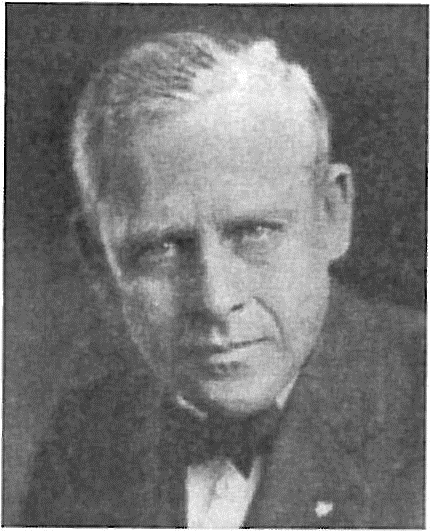
Jesse E. Buchanan (1938-1946, on military leave 1942-46)
Jesse Buchanan was born in Iowa. He was orphaned when he was an infant, adopted by his grandfather and raised in Spokane, Wash. As an undergraduate at the University of Idaho, he demonstrated leadership, serving as a Cadet Colonel, a Student Council member, the Senior Class president, the editor of the Idaho Engineer and in his Engineering honorary society. He received his BS(CE) in 1927, the first Idaho engineering student to graduate with a 4 .0 grade point average. He received his MS(CE) in 1929 and served as an instructor in Civil Engineering and director of the Engineering Testing Laboratory. He earned the Civil Engineering professional degree in 1936. In 1936 he left the university as an assistant professor to become a research engineer for the Asphalt Institute. In 1938 he came back as dean of the college. The impact of the Depression on Dean Buchanan was still strong, when he had learned to use funds frugally. During his tenure as dean, he recruited an able and loyal faculty who stayed at the university to carry out their mission. He fostered a camaraderie among the engineering faculty that was friendly and congenial but very business-like. He insisted that the syllabi and assignments for all courses be on file in his office.
Buchanan was a natural leader and he wanted the students, staff and faculty to excel in what they did. His columns in the Idaho Engineer are characteristic of his crisp style and direct-to-the-point approach. This quotation from an article in the December 1940, issue titled "Packaging Is Important Too", was typical:
Engineering Education is an opportunity, nothing more. It is an opportunity to develop self-discipline; to adopt worthy habits of study; to acquire and practice the scientific method of approach; to lay the foundation for a full and useful professional life; to acquire the elements of a liberal culture. In short, good engineering education is good general education, if pursued with proper attitude and diligence.
The professional practice of Engineering requires training to deal with "things and forces" and with persons and social relations or "men and their ways". This two-fold objective means that attention must be given not only to technical subjects involving forces, energy and materials, but also to personal development, the better to deal with men. In many respects personal development is an "extracurricula1· activity ", but none the less important, and the opportunity for improvement while attending college is just as real as that of technical accomplishment.
During Buchanan's tenure as dean, the College of Engineering grew in stature. He set an example to others to become professionally involved by serving on the Idaho Engineering Registration Board and by participating actively in professional organizations and insisted that the faculty follow his example.
In 1942 Buchanan was called to active duty in World War II. He served with the U.S. Army Corps of Engineers at Fort Belvoir, Virginia, and in the China-Burma-India theater. He was discharged as a Lt. Colonel in 1945 and returned to Idaho. While Buchanan was on military leave, J. Hugo Johnson served again as acting dean for three years. L. C. Cady served one year.
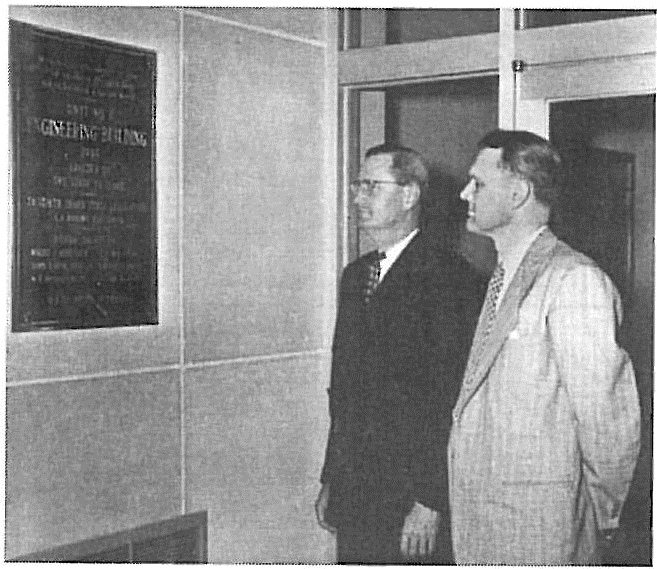
Allen S. Janssen (1946-1967)
Allen S. Janssen was born in Boise in 1907. His father was an official in the Idaho Power Company. He pursued a degree in architecture and graduated in 1930 from the University of Idaho. However, because he took many of the engineering courses after graduation in 1931 he pursued work as a draftsman for the Idaho Department of Highways. This experience led him to pursue his second degree, a bachelor's in Civil Engineering, which he received in 1933. At that time he also developed a lifelong close working relationship with the Idaho Department of Highways. He was the friend and confidant of all the administrators of that state agency from 1931until his death in 1983. He continually advised the Department and influenced its selection of staff personnel by recommending numerous college graduates for employment.
Janssen became an instructor in Civil Engineering in 1931, even before he finished his bachelors degree. Jesse E. Buchanan must have recognized his ability through his neat and orderly engineering work. He followed in the footsteps of Buchanan to serve as Testing Engineer in the Engineering Testing Laboratory. At times this was a joint appointment with the Idaho Department of Highways.
In 1937 Janssen received a master's degree in Civil Engineering. In the preface to his thesis titled "A Proposed Engineering Building for the University of Idaho," he states:
That a new Engineering Building is needed at the University of Idaho is a foregone conclusion. The problem in this case resolves itself into one wherein matters of size, adequacy and ultimate economy are important. This work attempts to provide a solution by answering these questions.
At that time two sites for the new building were being considered the area west of Ridenbaugh Hall, running south, or across Blake Avenue from Hays Hall, running west. Based on his study of enrollment data, Janssen projected the 1947-48 enrollment at 500 students (actually the enrollment that year was 605) and planned the building to include the number of rooms, labs, offices, etc., to accommodate that many students. He estimated the cost of the four-story building at $250,000.
As Buchanan became busier with administration as the dean of the college, Janssen went from teaching the drawing classes, co teaching the mechanics classes and finally to teaching the soil mechanics and structural engineering classes. He, like Buchanan, was noted for his expectation that the students would do many problems and do them in a prescribed way. Everybody knew that he believed in a neat, orderly and readable presentation. This expectation extended to having correct spelling and grammar. He believed in materials being documented and recorded accurately. His work in the testing laboratory reflects a quality of engineering that was his trademark and that became a tradition for those of us who worked with him.
In 1942 Janssen went on military leave with the U.S. Navy and was assigned as an engineering officer to the 55th Naval Construction Battalion. There, he was involved in the design and construction of airfields, piers, PT bases, docks and allied wartime facilities in Australia, Port Moresby, Hollandia and Schonton Island. In 1945 he was assigned to temporary duty with the Army Corps of Engineers at Fort Belvoir, where he developed manuals describing the soil mechanics of airfield construction. In June, 1946, he was discharged, with the rank of Lieutenant Commander, from the development section of the U.S. Navy's Bureau of Yards and Docks. In 1949 he served as a civilian consultant on a classified project for that agency at Fort Hueneme, California. As dean of engineering he always kept close ties with the university's ROTC programs.
When Janssen returned to campus in 1946, he was soon asked to be acting dean when Jesse E. Buchanan was asked to be the university's president. Janssen was named dean in 1947.
Perhaps Janssen's greatest accomplishment as a dean was his ability to influence each engineering student. He always had time to confer with the students and believed that faculty members should as well. He called each student by his/her first name and was able to help mostly through encouragement. His fairness and impartiality to students was always apparent. I know that many students, who were bordering on failure, owe their eventual success to Janssen's gentle touch that built their confidence and self-esteem. Janssen was neatly groomed, handsome and imposing in his physical appearance. He opened doors for help from benefactors and developed the trust people soon learned was his way of achieving a spirit of excellence. He believed in excellence and showed it in his daily work. His office was always neat, orderly and ready to receive Regent, President, or a struggling rag-tag student.
Janssen felt students needed good opportunities for employment interviews and believed in writing encouraging recommendations to prospective employers. The officials of various companies came to respect Janssen and his recommendations of particular students. Beyond the conventional grades that were filed for classes, Janssen kept a card system for rating students, which he encouraged faculty to complete and file in his office.
Having been trained as an architect, Janssen took great interest in the plans and architectural drawings for the new Engineering Building erected in 1950. Later, the building was named in his honor. He was very conservative in his financial actions as dean, paying careful attention to see that expenditures were properly made. He supervised and signed all paperwork, to see that rules were adhered to and procedures followed. He kept files of all course outline and assignment sheets and expected the faculty to keep the files up-to-date. He was a great supporter of the Idaho Engineer, the Engineers' Show and the Engineers' Ball.
In an effort to make the college more uniform in its character and performance, he encouraged the faculty to follow engineering specifications for the preparation of problems and reports. He also ran meetings with great care and orderliness and was concerned about the proper preparation of the meeting minutes. He felt that this was the engineering way of doing things. Also notable was his relationship with the other deans and administrators on campus. He was always trusted by the others and was ready to cooperate and work for the total good of the university. In addition, he was always a defender of the college and of the university's preeminence as the leading higher education institution in Idaho. In 1965, when he defended the college's position on engineering education before the Idaho Legislature, he submitted the following statement: "Never has a qualified engineering student who is or was a resident of Idaho been turned away from the doors of the College of Engineering. And one never will be as long as I have anything to say about it."
He was a defender of public education and made sure it was available to all who really wanted to seek an education in engineering. As Dean, Janssen went often to high schools to recruit and advise students. Gradually, he did call on some faculty members to also carry the word. Student recruitment and high school relations were an important part of Janssen's administration and he found a willing helper in Professor Roland Byers.
Janssen was always willing to spend time with faculty members and was able to defuse those who were upset with a minimum of conflict and disruption to the college routine. He used the talents of George Russell, assistant dean and later associate to the dean, to approach people and care for the facilities of the college.
Janssen also became a leader in many organizations outside the college. He served on the Board of Trustees of the Moscow School District and was chairman from 1950-1953. He was on the Board of Directors of the Kiwanis Club and the local highway district and served as advisor to his college fraternity. His greatest devotion though, was to his profession. He served on the State Board of Engineering Examiners and was recognized nationally in 1957-58 by becoming President of the National Council of State Boards of Engineering Examiners. He was awarded the Distinguished Service Certification of that organization and honored that same year as an Engineer of Merit by the Spokane section of the American Society of Civil Engineers.
After stepping down as dean in 1967, Janssen continued to serve on the engineering faculty until he retired in 1972, with a total service to the college of 41 years. During his tenure he made a difference in the lives of many aspiring engineers. From his efforts a ripple effect has gone out that was written about by former student and faculty member Walt Friberg, when he referred to the "spirit of excellence at Idaho, particularly in the College of Engineering."
H. Sidwell Smith (1967-1973)
H. Sidwell "Sid" Smith was born in 1914 in Salem, Oregon. The fact that he was a Northwesterner by birth played a role in his appointment as dean of the college in 1967. During the Depression he had migrated to the Midwest and had graduated from the University of Iowa in 1935. After college he went to work for a small engineering firm, Stanley Engineering Company of Muscatine, Iowa. He became a partner and watched it grow to a sizable and very respected engineering firm. He became well-known in the Midwest for his expertise in water supply and treatment. Early on in his career he became a believer in professional organizations and joined the Iowa Water Pollution Control Association, which he served as President in 1957-58. He also was active on the Iowa Board of Engineering Registration.
Smith had always been interested in education and in 1960 he left his company in mid-career to pursue advanced degrees at Iowa State University at Ames, Iowa, eventually receiving his doctorate. Even before finishing that degree he went back to his alma mater, the University of Iowa, to serve as a professor. By 1966 he had risen to head of civil engineering. However, he had a yen to go back to the Northwest and so applied for the position of head of Civil Engineering at Idaho. The search committee was impressed and convinced President Hartung and Vice President Wally Steffens that Smith was the man for the job. He was offered the job, but he felt he could not accept the position, due to some research projects from the federal government for which he had just received grants at Iowa. However, that summer he and his wife, Thelma, drove through Moscow, stopping for a short visit. The warmth and friendliness of the faculty influenced him to indicate to the dean that he was still interested in making the move to Idaho. Although he had applied for head of Civil Engineering position, in 1967 he was offered the deanship with a minimum of formalities. Apparently his 1966 contacts had interested the faculty and the administration enough to convince them that he was exceptionally well-qualified to be the new dean of the college.
Smith brought his ideas about professionalism to the college. He became a member of the Idaho Board of Examiners for Engineering Registration. Apparently, that board and the Idaho Society of Professional Engineers were pressuring the college to upgrade the faculty and to make changes to become more competitive. The most recent accreditation report had recommended that the college hire more doctoral-trained professors and fewer of its own graduates. Smith called in all the younger faculty members and advised them to get their advanced degrees. A few resented the request and quit; others responded and went away to get their degrees.
In 1968 Smith organized an advisory board to the college. Professor Roland Byers had earlier suggested and advocated this group. Smith selected successful practicing engineers as board members, some of whom were university alumni. They developed goals for the college and helped to upgrade faculty salaries, obtain modern equipment and make recommendations to the Administration and the Regents for improving the college programs.
When the J.E. Buchanan Laboratory Building was dedicated, Smith had a hand and influence in the choice of topics for the program. Titled "Ghettos to Galaxies - The Social Impact of Engineering", the program presented people-oriented topics such as urban concerns, the economic aspects of environmental control and the relevancy of humanistic-social studies to the engineering curriculum. He stressed that engineers must also place importance on these non-technical aspects of engineering. Even after leaving Stanley Engineering Co., Smith was sought by cities and companies for professional advice on operating sanitary and water systems. He continued to publish articles on waste water treatment in professional journals.
In reporting to the college faculty meeting May 27, 1969, on deliberations with the Advisory Board, Smith indicated that "they (the Advisory Board) put a saddle on the college's back and spurs on the boots." He appointed ad hoc college committees to consider special topics in continuing education and extension, student recruitment, student-faculty involvement and by-law amendments for the consideration of the college administrators. As a result, many more short courses were offered, the engineering outreach program of video instruction was initiated, the Engineers' Tie (an informal social event) was started, and the student-faculty involvement program was strengthened as a way to recognize student achievement and participation in other than just the classroom setting. The college student recruitment program became a model for other colleges to follow, with Smith and Professor Byers working together to build a creative and an innovative program. Not the least of Smith's administrative efforts was the revision of the college by-laws, in order to get more faculty involved in planning and operating the college.
He chose capable and innovative people to function in the associate and assistant to the dean roles. He leaned heavily on and expected much of these people.
Most of all, as dean of the college Smith wanted to reduce the barriers among the departments that sometimes generated petty special interests. He sometimes chastised the departments leaders, because they seemed unwilling to help generate a "oneness" like the real world professional effort. He wanted a truly unified college. Reviewing a few of his memoranda shows that he was straight-forward in this intent. He recognized those individuals who had high qualifications and records of achievement, but did not let that stand in the way of seeking other qualities he wanted for the college. He had made progress in this realm, but his untimely death in October 1973, brought it to a halt. Few of Smith's statements have been preserved in written records, but in an excellent quote about research, obtained from a 1967 article in the Idaho Daily Statesman, he wrote:
A basic principle of research engaged in by our college is that it must have academic significance; that is, it must contribute to the educational program by affording opportunity for faculty creativity and updating and by providing meaningful research projects for graduate student development. A few years ago, research was everywhere regarded, to use a mixed metaphor, as the highly mystical proposition of gazing in a crystal ball and pulling rabbits out of hats. It was supposed to supply all our material wants and be a panacea for all our social and economic ills. Now we realize research is just a sensible, a businesslike, a scientific approach to problems. But most of all, research is a cooperative effort. The day of a lonely genius working in a dark basement is past.
Smith left a heritage of the pursuit of excellence in a professional discipline.
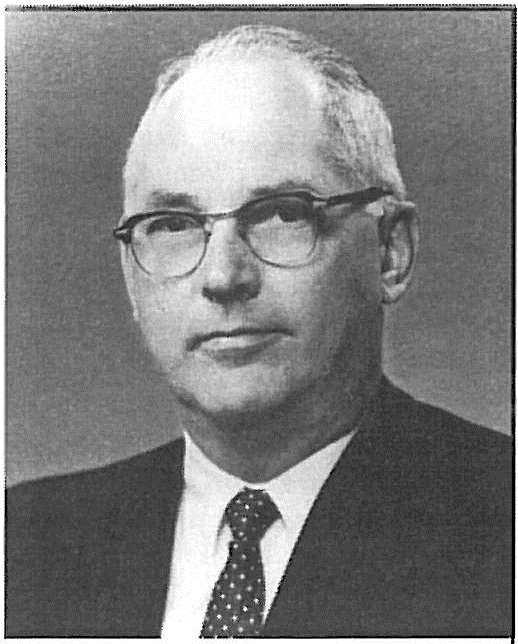
Robert R. Furgason (1974-1977)
Robert R. Furgason grew up in Spokane, Wash., and came to the university as a scholarship student in 1952.
When Melbourne Jackson came to the college as head of Chemical Engineering in 1953, Furgason thrived under Jackson's aggressive style and patterned his habits of study, analysis and teaching after those of his advisor. No doubt he had also inherited many leadership qualities, but he certainly thrived and grew as a student under Jackson and Dwight S. Hoffman. During his summers as an undergraduate he had worked temporary assignments for Boeing Aircraft Company and Phillips Petroleum Company. These jobs started a pattern of periodically working for industry to get professional experience, which continued throughout his service to the university.
Furgason completed his BS degree in Chemical Engineering in 1956 and stayed to seek an MS degree and teach as an instructor. As a Walter P. Murphy Fellow, Furgason continued his advanced degree work at Northwestern University and completed his doctorate in 1961. He returned to the college and became an outstanding teacher, honored as the outstanding teacher of the university in 1966.
In 1964 Furgason was selected as head of the Chemical Engineering Department. In this position he contributed to the planning, design and decision making for the Buchanan Engineering Laboratory. Because he had spent his undergraduate years in the crowded conditions of the Kirtley Laboratory, he worked hard to get adequate facilities for his department. He helped the college establish a career guidance and visitation program to Idaho high schools and developed a freshman scholarship program that brought very talented young scholars to his department. Furgason also was instrumental in initiating a Women-in-Engineering Program in the college.
Through this and earlier Chemical Engineering programs, the college made a great effort to give equal opportunities to women.
This was even before the advent of the affirmative action requirements.
In 1969-1970 Furgason took a sabbatical leave from the university and entered a special program with the B.F. Goodrich Co. in Ohio to gain industrial experience working in polymer processes. From this experience he taught courses in numerical analysis and engineering modeling and simulation. He kept in contact with that company in a consulting capacity and broadened his training to bring a practical approach to his college responsibilities. In 1974 Furgason moved up the administrative ladder and served as dean of the college until 1978. As dean he helped to initiate the Engineering Video Outreach Program (now the Engineering Outreach Program), developing the college's facilities and continuing education activities with video coursework. He also chaired a committee on computer use and instruction for the university. Through this effort the college developed a cooperative computer science program that was first presided over by a university-wide committee and finally became a Regent-approved program as the Computer Science Department of the college.
On another sabbatical leave in 1978, Furgason taught plant design and economic analysis, as well as mathematical modeling, in Spanish to Quito, Ecuador. He helped the Escuela Politecnia National (EPN) to establish curriculum development with new work on computers and worked with Peace Corps volunteers to supply energy to remote locations. After this leave the college saw increased participation on campus of South American students. He set an example for ways to spread engineering education to third world countries.
Furgason impressed President Richard Gibb, who chose him as Vice President for Academic Affairs and Research in 1978. One of Furgason's contributions in this position was developing the cooperative graduate engineering program at the Idaho National Engineering Laboratory at Idaho Falls.,
In 1984 Furgason left his alma mater to become Vice Chancellor for Academic Affairs at the University of Nebraska at Lincoln.
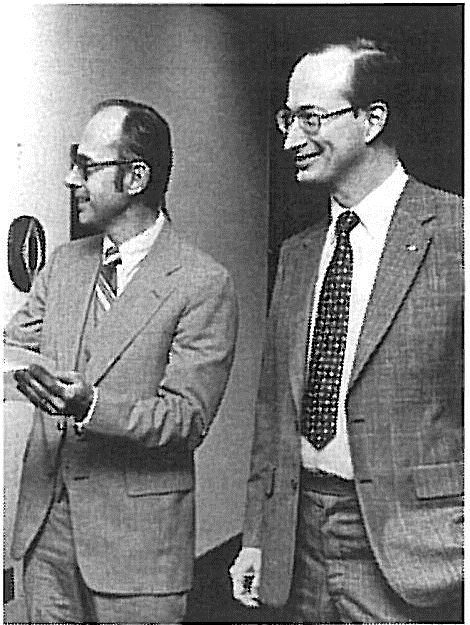
Melbourne L. Jackson (1979-80)
Mel L. Jackson was officially dean for only one year (7/79 to 6/ 80), but he served as acting dean three times: 1) following Sid Smith's death in October 1973, 2) following Furgason's elevation to Vice President in August 1978, and 3) when he was called back from retirement after his successor Richard Williams resigned in January 1983.
Jackson came to the college in 1953 to succeed Castle Reiser as head of the Chemical Engineering Department. He had been educated at Montana State Normal College, Montana State University, the Institute of Paper Chemistry, Lawrence College in Wisconsin and the University of Minnesota. At the latter school he received his doctorate in chemical engineering and physical chemistry. He taught at Montana State University, the University of Minnesota and the University of Colorado. He also served as head of the Process Development Group at the Naval Ordnance Test Station in China Lake, California, where he was involved in building rockets and taught part-time for the University of California, Los Angeles.
Jackson was born in the small mountain community of Wisdom, Montana, in rather tough times and under austere conditions. After his premature birth he spent his first weeks in a shoe box warmed by a wood stove. From this adversity he developed a dynamic fighting spirit. When he came to Idaho the department had only three faculty members. He became a great proponent of research and graduate study, both on campus and at the Idaho National Engineering Laboratory program at Idaho Falls. He was also instrumental in getting the doctoral program started in Chemical Engineering in 1960.
From 1965 to 1970, Jackson served as dean of the Graduate School and coordinator of research. He was a great teacher and advisor, serving as major professor for over 65 students. He was honored with the Sigma Xi Faculty Research award in 1958, 1974 and 1975, and with an Honorary Doctor of Engineering from Montana State University in 1980. He has served as a consultant to many industrial organizations including: Aerojet-General, the American Potato Company, Boise Cascade Company, FMC Corporation, Morrison-Knudsen Company and JR. Simplot Corporation. He made foreign technical visits to England, Sweden, Norway, Austria, Germany and China. In 1976-77, he traveled to Japan, Korea, Taiwan and the Philippines with National Science Foundation support and gave seminars and lectures on air pollution, waste water control and fermentation.
Jackson was a forceful advocate of public service and served on the Moscow School Board for five years, three as chairman. He did things in a no-nonsense and get-on-with-it style, but with a wry sense of humor. He helped found the University of Idaho Federal Credit Union. He also served for 13 years on the Idaho Air Pollution Commission. No doubt his greatest achievement is reflected in his former students, who have made successful careers as academic administrators, government agency leaders and the successful heads of industrial enterprises and research firms.
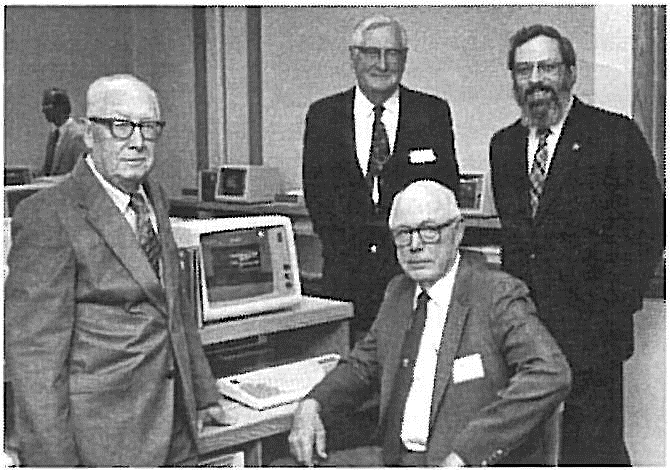
J. Richard Williams (1980-1983)
J. Richard Williams was born in Millen, Georgia and grew up to become an outstanding student at the Georgia Institute of Technology. He received his first degree in Physics and his MS in both Physics and Nuclear Engineering. His doctorate was in nuclear engineering, which he received in 1967. He joined the instructional and research staff of Georgia Tech and soon advanced in both rank and responsibilities. He became active nationally and internationally in the field of energy, working with wind, solar and nuclear power. From 1973-1980, when he left Georgia Tech he served as associate dean of research, cooperating with many foreign and domestic universities. In a university's national search for an engineering dean, he stood out as an outstanding candidate, having great potential.
As Dean, Williams was always striving for more in research project activity. He stayed two and a half years and then accepted a position as dean of engineering at Long Beach State University in California.
William E. Saul (1984-1989)
Bill Saul received his BSCE degree from Michigan Technical University at Houghton, Michigan in 1955 and then worked for Shell Oil Company in New Orleans until 1959. He returned to Michigan Tech and completed an MS degree in Civil Engineering in 1961. From 1960-62 he taught there as Instructor in Engineering Mechanics and then did graduate work toward a doctorate in civil engineering at Northwestern University, finishing in 1964. He spent his next 20 years teaching at the University of Wisconsin, where he rose from assistant professor to head of the Civil and Environmental Engineering Department. Over the years he supervised more than fifty graduate students. He was active in several professional societies and served as President of the Wisconsin section of the American Society of Civil Engineers. When he came to Idaho in 1984 he brought a strong interest in teaching backed with a strong research program. At the college, he pushed to strengthen its research stature, while preserving its reputation as a great undergraduate teaching program. Quietly he added faculty that had strong interest in research and helped strengthen grant programs to obtain financial support from various sources.
At the end of the 1989-1990 academic year, he left the University of Idaho to become the head of the Civil and Environmental Department at Michigan State University. There he accumulated numerous awards and honors and was very active in many professional societies and research organizations, including the National Science Foundation’s Structures and Materials Engineering Advisory board and the Accreditation Board for Engineering and Technology.
Associate deans serving with dean Saul included Richard T. Jacobsen (Research) and Weldon R. Tovey (Academic).
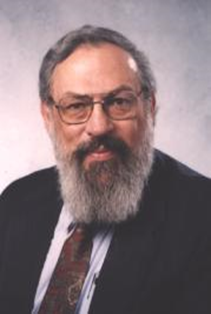
Richard T. Jacobsen (1990-1999)
Richard T. Jacobsen became dean of the college in July 1990 and served in this capacity through 1999. He had served as associate dean for research and as director of the Center of Applied Thermodynamic Studies. He continued in this role throughout his service as dean.
Jacobsen is a native of southeastern Idaho. He earned both his bachelor's (1963) and his master's (1965) in mechanical engineering at the University of Idaho, receiving his doctorate from Washington State University in 1972. After completing his doctorate, he joined the faculty at U of I and advanced through the academic ranks to professor. He served as chair of the ME Department from 1980 to 1985. While at the U of I, Jacobsen was responsible for over $12 million in grants and contracts. Most of the awards were for research on the thermophysical properties of various fluids and mixtures. Funding agencies included NIST/NBS, GRI, NSF, DOE, DOE EPSCoR, EG&G, ASHRAE and NASA.
After leaving his dean position in 1999, Jacobsen was chief scientist for the Idaho National Engineering and Environmental Laboratory (INEEL) in Idaho Falls. Concurrently he was appointed at various times as deputy laboratory director for research and development, associate laboratory director for energy and environmental science and associate director for strategic management.
Starting in 2006 he has served as dean of the College of Engineering, associate director of CAES and technology transfer officer, interim vice president for Research and Economic Development and executive director for Research and Technology — all at Idaho State University. He is a member of the University of Idaho Academy of Engineers.
Associate deans serving with Jacobsen included David Woodall (Research) and Howard Peavy, Interim (Academic)
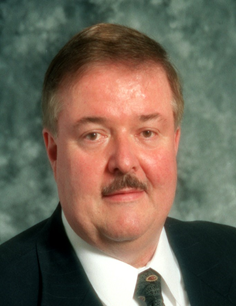
David Woodall (Interim Dean Jan. 1999-July 1999)
Prior to joining the faculty at the University of Idaho, Woodall was on the engineering faculty at the University of New Mexico. His professional experience included serving as a visiting scientist for the U.S. Department of Energy's Office of Space, a visiting faculty member at Universidad Nacional Autónoma in Mexico City, a visiting staff member at Los Alamos National Laboratory and as a consultant for several U.S. companies. He followed Jacobsen as associate dean for Research in 1990 and served in that capacity until January 1999 when he became interim dean. Serving with Woodall was interim Associate Dean Howard Peavy. Woodall served until a new dean started in July, 1999.
In October 1999, David Woodall left the U of I to become the dean of the College of Science, Engineering and Math at the University of Alaska –Fairbanks.
On Sept. 3, 2013, at age 67, Woodall suffered a heart attack and died while hiking with his son in the mountains of western Washington.
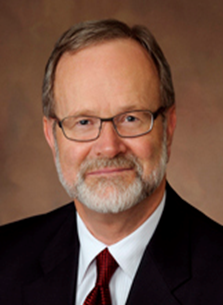
David E. Thompson (1999-2004)
David Thompson was born and raised in Port Arthur, Texas. He completed a bachelor's at Lamar University in 1963, a master's at Louisiana Polytechnic Institute in 1964 and a doctorate at Purdue University in 1970. Prior to coming to U of I as dean, he taught in the Mechanical Engineering Department at Louisiana State University (1969-1993), advancing through the ranks from assistant professor to professor. He then served as acting department chair for one semester and had joint appointments (1987-1993) in Orthopedic Surgery and System Science (1983-1993). In 1997, he moved to the University of New Mexico as Professor of Mechanical Engineering with joint appointments in Orthopedic Surgery and Neurosurgery. He continued in these positions until accepting the deanship at the University of Idaho in 1999.
Over his academic career, Thompson has been awarded over $12 million in academic, research and other competitive awards. He has published 130 papers in archival journals, invited papers, book chapters and other scholarly work. He is also the author of a text book Design Analysis: Mathematical Modeling of Nonlinear Systems
After retiring he moved back to the Albuquerque area where he resides with his wife of 50 years, Margaret, and their dog Emma. He is currently co-founder and President of Metric Echo, Inc., a private, start-up firm.
Associate deans serving with Thompson included Steven G. Pennoncello (Research), Howard Peavy (Academic) and Barry Willis (Outreach).
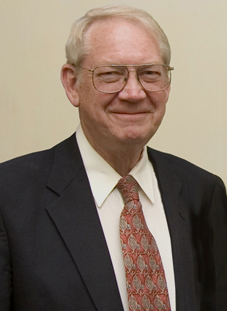
Charles L. Peterson (Interim Dean 2004-2006)
Charles (Chuck) Peterson has a long history with the University of Idaho. He received his undergraduate degree in Agricultural Engineering in 1961, then worked in industry, taught high school math and was an extension engineer with U of I. After, he returned to U of I and earned his master's in 1966. While a graduate student at U of I, he was an instructor in engineering science and was an assistant professor in Agricultural Engineering while working on his doctorate at WSU, which he completed in 1973 and joined the faculty at the University of Idaho as an associate professor and was promoted to professor in 1978. He served as interim head of the Biological and Agricultural Engineering Department from 2001 to 2004.
Peterson was very active in applied research. His work led to the development of equipment design for precision agriculture, erosion control and harvesting and storing sugar beets and potatoes. His most noted research, however, was in the area of Biodiesel where he is recognized world-wide as a pioneer in the conversion of vegetable oils to fuels. This research earned him the 2002 Idaho Innovation Award. He has collaborated with over 49 co-authors from 1965-2006 and currently has 18 single author publications as well as two patents.
In addition to research accomplishments, his major accomplishments include teaching awards and the Distinguished Faculty Award, 1997; Idaho Business Review Innovator of the Year Award, 2002; and Idaho Society of Professional Engineers Excellence in Engineering Education Award, 2006. He is a member of Phi Kappa Phi and Tau Beta Pi. He is a member of the University of Idaho’s Academy of Engineers.
Peterson currently resides in Emmett, Idaho, with Julianne, his wife of 50 years.
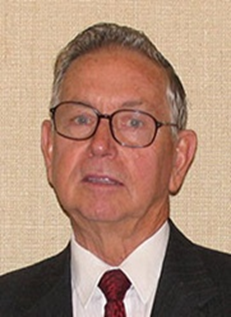
Aichia Elshabini (2006-2008)
A native of Egypt, Elshabini earned a B.S. degree in Communications and Electronics from Cairo University in 1973, an master's in microelectronics from Toledo University in 1975 and a doctorate from Colorado University, Boulder, in 1979 with specialty in Solid State Physics Devices and Optoelectronics.
Elshabini was on the faculty at Virginia Polytechnic Institute and State University from 1979 through 1999, attaining the rank of professor in 1988. She chaired the Electronics and Networks Committee from 1980 through 1999 and was Director of the Microelectronics Laboratories from 1990 to 1999.
Elshabini left Virginia Tech in 1999 to become chair of the Electrical Engineering Department at the University of Arkansas. She held this position until joining the University of Idaho in 2006. Elshabini served as dean of the College of Engineering at U of I from July of 2006 through 2007 when she resigned due to health circumstances. Associate Dean Howard Peavy served as acting dean through December 2007 and Don Blackketter served as interim through the remainder of the 2007-2008 academic year.
Elshabini remains at U of I as a distinguished professor of Electrical and Computer Engineering and is actively engaged in teaching and research.
Elshabini is a Fellow of the Institute of Electronic and Electrical Engineers (IEEE) and of the International Microelectronics and Packing Society (IMAPS). She was the founding editor of the IMAPS’ International journal of Microcircuits and Electronic Packaging from 1991-2001. She is the only woman to receive three prestigious awards through IMAPS. She also received three teaching awards at VPI and was listed in Outstanding Young Women of America in 1981 and 1983.
Serving as with Elshabini were Associate Dean Howard Peavy (Academic), Barry Willis (Outreach) and Assistant Dean Jean Teasdale (Research).
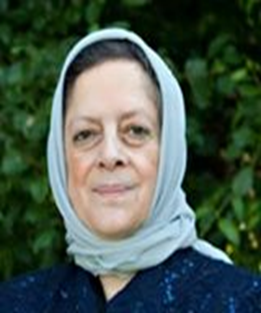
Donald M. Blackketter (2008-2011)
Don Blackketter is a native of Bozeman, Montana where his father, Dennis Blackketter, was on the Mechanical Engineering Faculty at Montana State University. Don followed in his father’s mechanical engineering footsteps, earning his bachelor's degree (1985), master's (1986) and doctorate (1989) in mechanical engineering, all at the University of Wyoming.
Don joined the M.E. faculty at the University of Idaho in 1989, moving through the ranks of assistant professor to associate professor in 1994 and to professor in 2001. He served as both Assistant Director and Acting Director of the National Institute of Advanced Transportation Technology and became chair of the Mechanical Engineering Department in 2006, serving in that capacity until he was appointed interim dean in November 2007. He was appointed dean of the College of Engineering in 2008 and remained in that position until July 2011 when he left U of I to become Chancellor of Montana College of Mineral Science and Technology in Butte, Montana.
Blackketter was an active researcher, authoring 27 journal publications, 10 technical reports, 34 conference publications and presentations, and three textbooks and instructional manuals. He generated approximately $3.4M awarded in grants & contracts funding. He also received three teaching awards in the M.E. Department. In 2003 he was a Fulbright Scholar in Quito, Ecuador. He is a member of the American Society of Mechanical Engineers (ASME), the American Society of Engineering Educators (ASEE) and the American Society of Automotive Engineers (SAE). He is also a registered professional engineer in Idaho and Montana.
Associate deans serving with Dean Blackketter were Senior Associate Dean Larry Stauffer and Associate Dean Barry Willis (Outreach).
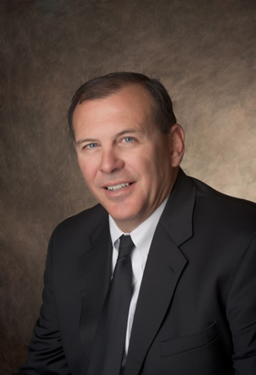
Larry Stauffer (2011-2021)
Larry Stauffer joined the Mechanical Engineering Faculty in 1987. He earned a bachelor's in Mechanical Engineering in 1978 and an master's in Agricultural Engineering in 1979 from Virginia Polytechnic Institute and State University. He then worked for Westinghouse Electric Corporation in Idaho Falls and went back to graduate school to earn his doctorate in Mechanical Engineering at Oregon State University in 1987.
Stauffer taught and conducted research on the Moscow campus until 1994 when he was transferred to Boise as a shared professor with Hewlett Packard Corporation, splitting his duties between research at HP and an engineering faculty member in Boise. Working with faculty at Boise State and Idaho State, they initiated the Idaho Manufacturing Alliance which later became TechHelp, Idaho’s manufacturing extension organization and served as the U of I Director for TechHelp. He also served as Director of the Engineering Management master's program beginning in 2004. He remained in these positions until he was appointed senior associate dean of the College of Engineering in 2009, moving back to the Moscow campus. He served in that position until appointed interim dean in July 2011 and appointed dean in May, 2012 following a national search.
Prior to becoming the dean, Stauffer was active in research and outreach. He authored 17 journal publications, 64 journal and refereed conference publications and numerous other technical publications on his work. He was PI or Co-pi on $10.9 million of external awards to fund these activities. In 2000 he spent a sabbatical leave to work with the National Institute of Standards and Technology in Washington D.C. He is a member of the American Society of Mechanical Engineers (ASME), the American Society of Engineering Educators (ASEE) and the American Society for Engineering Management (ASEM). He is also a registered professional engineer in Idaho.
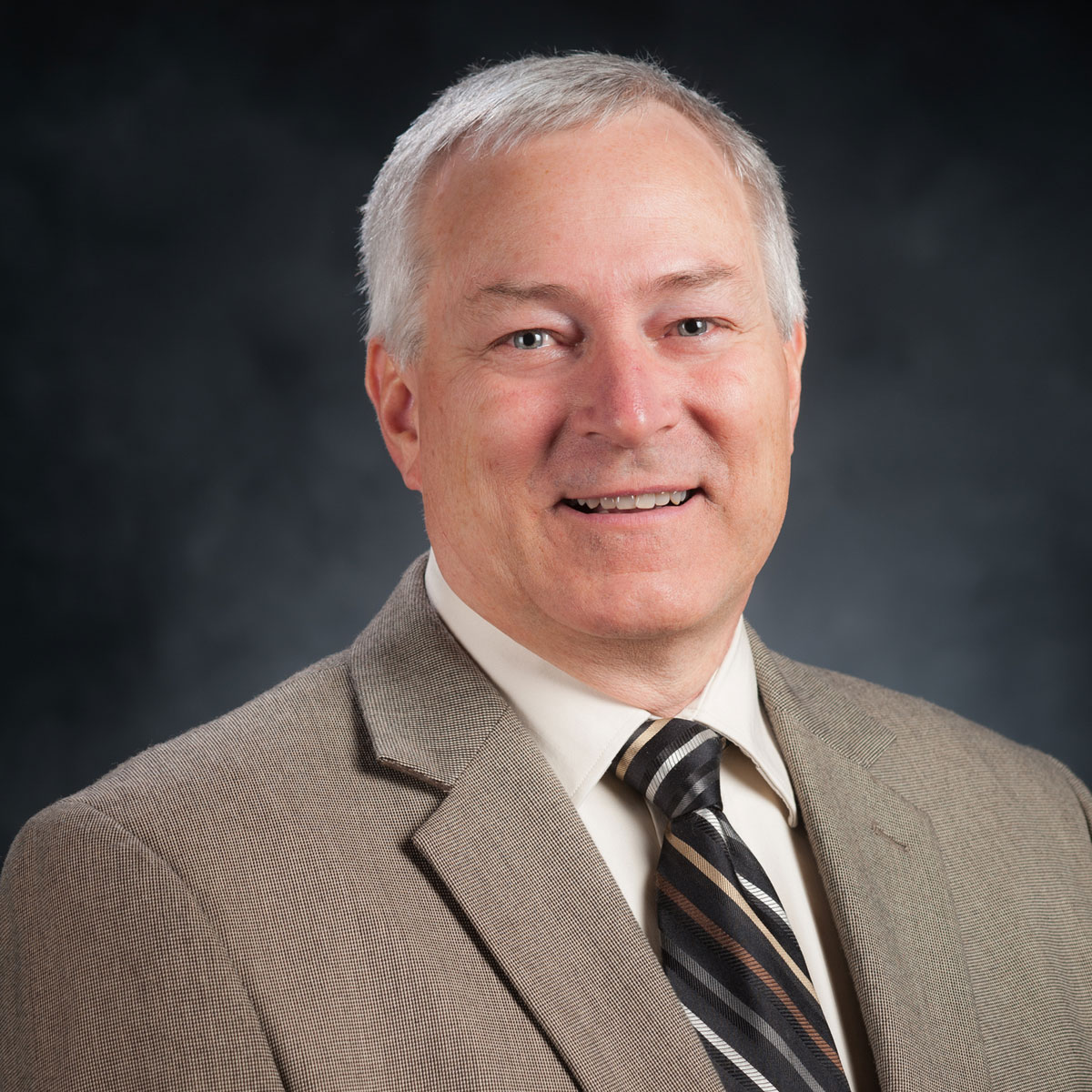
John Crepeau (Interim Dean 2021-2022)
The University of Idaho College of Engineering has named John Crepeau as interim dean of college. His appointment begins June 28, 2021.
Crepeau has been a mechanical engineering faculty member since 1994, and started at U of I as a program coordinator for mechanical engineering at U of I Idaho Falls. Moving to Moscow in 2009, he served as the department chair for mechanical engineering and has been the associate dean of the college since 2018.
With a focus on fluid mechanics and heat transfer, Crepeau has a number of publications and conference presentations in those fields as well as the history of science. He earned his bachelor’s degree in mechanical engineering from the University of California at Berkeley and his master’s and doctorate from the University of Utah, also in mechanical engineering.
He was a Fulbright Scholar in 2015 to 2016 in Ecuador and was an NSF-NATO Postdoctoral Research Fellow at Humboldt University in Berlin, Germany from 1992 to 1993. He won the John F. McCarthy Award from the International Council of Aeronautical Sciences and the Jesse and Mabel Hoffman Endowment Teaching Award from the University of Idaho. Presently, he serves on the Engineering Accreditation Commission of ABET, our college’s accreditation organization.
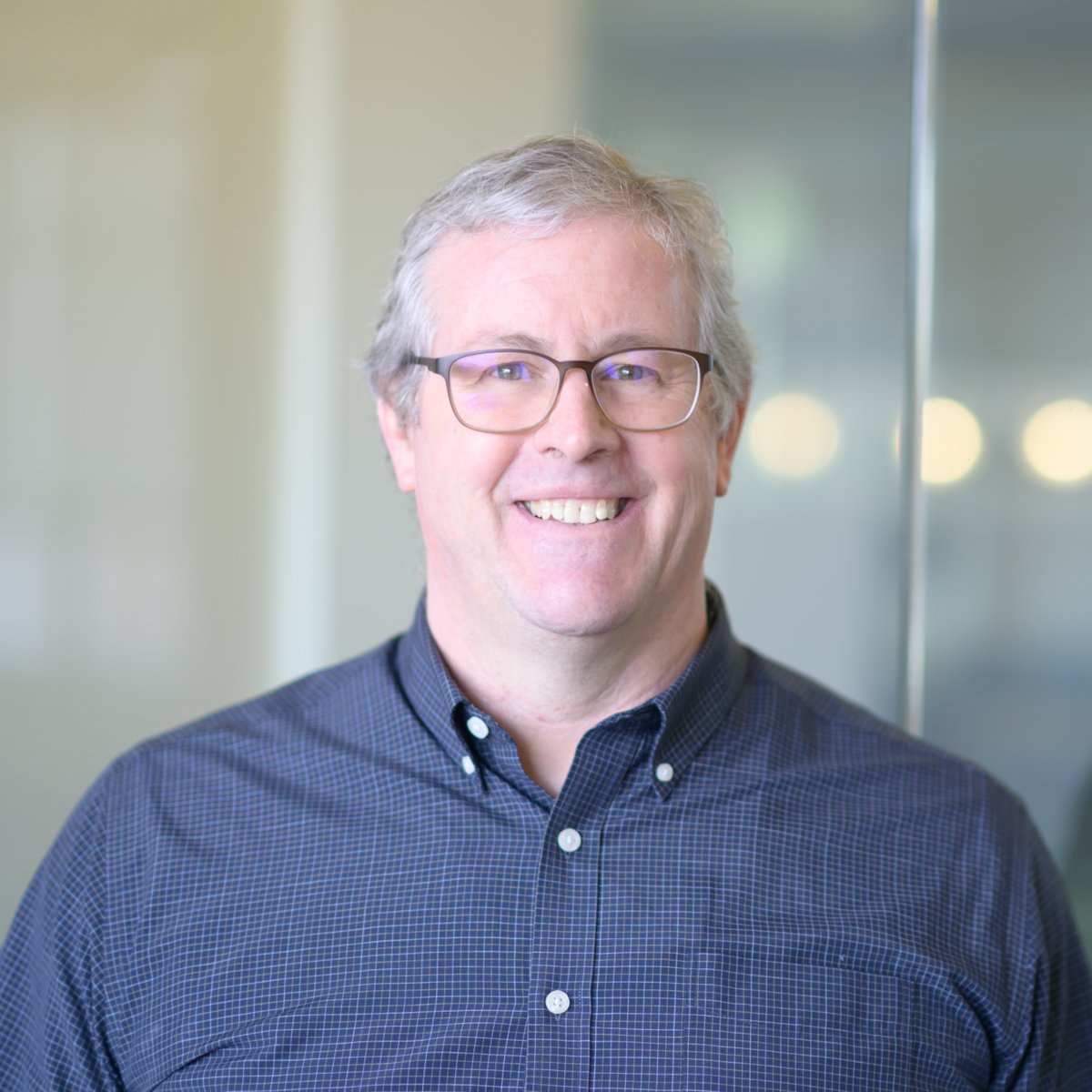
Suzanna Long (2022-present)
Before coming to U of I, Suzie served for seven years as professor and chair of Engineering Management and Systems Engineering at Missouri University of Science and Technology. She also led the Division of Continuing Studies as director of academic programs for Pittsburg State University, was the founding director and coordinator of the transportation-logistics program at Missouri Southern State University and a scientific and electronic records specialist with the U.S. federal government.
Suzie earned bachelor’s degrees in physics and history, a master’s degree in engineering management and a doctorate in engineering management all from the University of Missouri-Rolla, now Missouri University of Science and Technology. She also earned a master’s degree in history from the University of Missouri-St. Louis.
Suzie has published more than 140 peer reviewed journal and conference publications and 12 book chapters. Throughout her career, she has collaborated on research initiatives totaling $18 million and served as principal investigator on 22 of 44 awarded grant projects. Her research focus areas include critical infrastructure systems, strategic management and sustainable infrastructures, among others.
